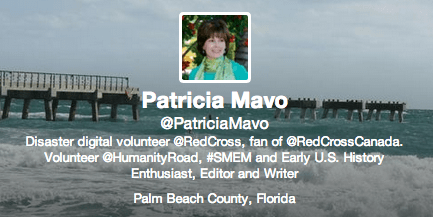Viral Marketing for Nonprofits: Applying Jonah Berger’s 6 STEPPS
This post is part of a series on viral marketing for nonprofits. Jonah Berger’s 6 STEPPS of viral marketing were first materialized when Berger, marketing professor at The Wharton School, took the marketing world by storm earlier this year when he released “Contagious: Why Things Catch On,” a book on viral marketing.
In the book, Berger contends that anything that has ever gone viral – from Rebecca Black’s Friday video to Kony 2012 – can be traced back to a few of the same six components. He calls them the six STEPPS to create contagious content for products and ideas.
We’ve adapted his findings and approach for viral marketing for nonprofits. Here are Jonah Berger’s 6 STEPPS to create contagious content for your cause.
1. Social Currency
The first principle is social currency. In a nutshell, people care about how they look to others, so give them something that makes them feel smart, cool, and in-the-know.
Wendy Harman, director of Social Strategy of American Red Cross, says the American Red Cross creates social currency by making their stakeholders and online communities feel proud to share information about the Red Cross.
One way they do this is by designating their Twitter volunteers as Disaster Digital Volunteers. This cool title makes their volunteers feel like VIP, something they can be proud of and share with their networks. Many Digital Disaster Volunteers include this position in their Twitter bios:
When creating social currency, think about what your nonprofit could do to make supporters feel special. For example, animal rescue organizations could allow some of their supporters to join them on animal rescue missions. The supporters that embark on these trips will most likely tell their friends and family about their experience, and in doing so, they will help build awareness for your organization.
Click here for five ideas to create social currency for your nonprofit.
2. Triggers
Fill in the blank: _____ makes people think of my organization.
Think about your answer for the fill-in-the-blank. How prevalent is this trigger in your supporters’ daily lives? The idea behind triggers is that the more frequently your nonprofit’s supporters and potential supporters encounter your organization’s triggers, the more likely they’ll talk about it.
When you’re creating a campaign for your nonprofit, leverage an object, thought, smell, sight or sound that will be frequently triggered in your audience’s mind. When they encounter your trigger, they will immediately think of your organization and talk about it with others.
For example, Friday is a trigger for Rebecca Black’s infamous music video. Click here to learn more about how Rebecca Black, Dove, and UNICEF all leveraged triggers to increase word of mouth.
3. Emotion
Contrary to the popular belief that your nonprofit should only share happy posts on Facebook, Jonah Berger contends happiness will not drive people to action because it’s a “physiologically low-arousal” emotion.
To drive people to action, use high-arousal emotions like awe, excitement, anger, amusement and humor. These emotions fire people up, and this activation gets them to share your posts or take action.
An example of a nonprofit leveraging high-arousal emotions comes from our client, NRDC. This month the organization shared a photo of a little pig with the following status: “When factory farms feed unneeded drugs to their animals, they can breed dangerous antibiotic-resistant superbugs. Help stop the misuse of antibiotics: http://bit.ly/1comeUu.” NRDC’s posts usually get between 100 to 300 shares, but this particular post was shared more than 700 times, because the image and copy evokes anger.
Click here to see how other organizations have leveraged high-arousal emotions in their Facebook posts to increase word of mouth.
4. Public
The easier something is to see, the more likely people will talk about it. This month, it’s hard to not talk about – or at least think about – breast cancer. There are many breast cancer walks and pink consumer products since October is Breast Cancer Awareness Month.
But that doesn’t mean you need a whole month dedicated to your cause or branded products to make your organization and cause visible. Consider event venue: could you host your end-of-year reception outdoors, with posters and flyers, somewhere with high foot traffic? Consider swag: branded keychains are nice, but people usually have their keys in their pocket or purse, so bumper stickers are more likely to get people talking. This is why you receive an “I voted” sticker as opposed to a certificate or confirmation letter.
5. Practical Value
The idea behind this principle is that people will share content that is incredibly useful. To create practical value, the information you share must be relevant and be packaged in a way that inspires people to pass along your cause along with the information.
To determine whether your information has practical value, ask yourself: Will people appreciate your organization more because you shared this information with them? Cleveland Clinic is a great example of an organization that leverages practical value to get its fans to share helpful information. The organization’s Facebook page has more than half a million fans, and its posts typically get hundreds of shares thanks to the practical value of the posts.
6. Stories
People find it easier to remember stories than facts, so find stories for people to share. It’s important to note that your organization should be integral to the story. While videos of people telling their stories can be powerful, these stories won’t help your organization unless your organization and the services you provided are mentioned, so make sure the stories you tell always carry your brand.
Your cause or campaign doesn’t need all STEPPS to go viral, but the likelihood of going viral increases greatly if it has many of the elements listed above. Ready to read part two of our viral marketing series? Click here.

